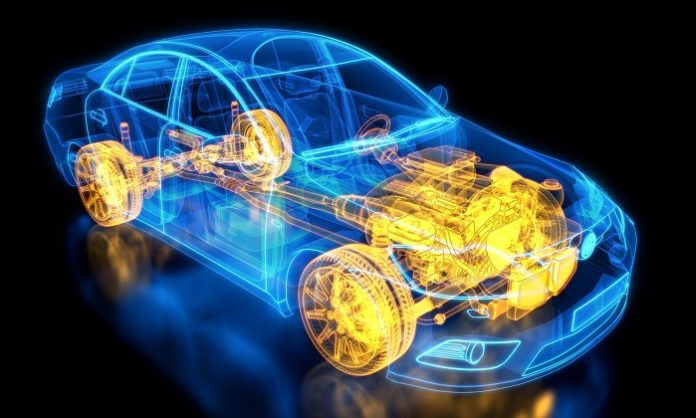With the updating technology, the world is running fast towards Automation. Similarly, there is a surge in demands of consumers and at the end of designers also to innovate better. The continuous demand and competitive pressure have pushed manufacturers to build greater intelligence into automobiles, trucks, and other highway vehicles. Today, designers can draw on a breadth of increasingly powerful hardware and software technologies to create more sophisticated automotive solutions.
In the automobile industry, AI-based autonomous vehicles are setting the pace as automotive new technology innovations. Self-driving cars are allowing AI to enable innovative transport methods. These vehicles do not require drivers and mainly rely only on sensors and software to operate.
Advances in sensor technology that enhance navigation and object detection, advanced braking systems, image processing algorithms, and machine vision have created opportunities for automotive manufacturers to explore a wide range of automotive electronics solutions. Miniaturization of electronic components, product convergence, and smart device adoption facilitate developments in the advanced driver assistance and electric vehicle (EV) industries.
In the development of the Internet of Things (IoT), vehicle connectivity is considered to be crucial. In addition to apps that speak to each other, future connected vehicles can communicate with the surrounding environment, resulting in different forms of business opportunities with the data collected. Radar, vision, and LiDAR (Light Detection and Ranging) system technologies can be expected to have a high impact in making vehicles fully autonomous with enhanced safety features. Advancements in electronic control units (ECUs), powertrains can be expected to be pivotal in the adoption of EVs.
To have a better understanding circling the intricacies of the subject, TimesEV Sub Editor and Technology Correspondent Sheeba Chauhan had an insightful conversation with the experts, Nachiket Hardas, Senior Principal Manager, Renesas Electronics India and, Sanjay Jain Automotive India FAE Manager, Texas Instruments.
The emerging technologies that will impact automotive safety and connected living
The launch point of our conversation was the emerging technologies that are going to impact the automotive safety, to which Nachiket said, “A connected vehicle is equipped with a host of smart and convenient features. While automotive safety has driven many advancements in automotive industry for physical safety and improved overall driver experience. For a Connected car cyber-security is of paramount importance and will directly impact automotive safety.”
Sanjay shared his opinion about the same by saying, “Automotive safety is required for every vehicle and is important to every driver on the road. That is why TI is helping make car collisions a thing of the past by making advanced driver assistance technologies accessible to everyone. We have been innovating in automotive safety for decades, from passive safety systems like airbags and anti-lock brakes to active safety technologies, such as lane change assist and automatic emergency braking.
“Today, we are engineering progress by helping to improve vehicles’ ability to sense, process, and communicate information, building the foundation for an autonomous future. We are transforming camera, radar, and sensor fusion system design to help create vehicles that can see in any road condition and avoid collisions before they happen.”, He further added.
The technology/application pipeline for automotive electronics systems and the future growth opportunities
Sanjay told us that, TI continues to focus on Sense-Compute-Communicate aspects as we deliberate our Automotive Technology Roadmap across these key areas of innovation and development. He said, “To cite an example of Compute aspect in Autonomous Driving Applications, the most complex of the specialized products required is the high-performance application processor at the heart of ADAS camera-based sensor and fusion, as well as some radar-based, features.”
Nachiket added, “With the evolving E/E (Electrical- Electronic) architecture, Zone and Domain control applications with highly integrated ECU will demand improved performance and security, example, Renesas 16nm SOC and 28nm Microcontrollers offers developers several new enhancements including new application-specific accelerator IP, higher performance levels, and increased security. This combination enables users to integrate multiple ECU functions into a single ECU while adhering to stringent automotive-grade safety, security, and real-time operation requirements.
RADAR, LiDAR technologies impact on the fully autonomous vehicle
“The sensing abilities of an Autonomous vehicle is a critical element in ADAS system and defines the autonomous driving level. These sensors help mitigate crashes and accidents by providing advance warning and assist in controlling the vehicle. Function like autonomous braking, collision warning, blind-spot detection, Lane Keep Assist are all enhancing safety. Sensor fusion is essential to achieve Level 3 and above in autonomous driving.” said Nachiket
Sanjay explained that, “In order to respond to hazards, cars need to both classify obstacles and accurately judge their distance in any weather or lighting conditions. One way to do this is through radar technology. The problem was that radar technology had historically been large, expensive, power-hungry, and designed to detect large objects like planes or tanks – not individual pedestrians.”
The result was TI mmWave radar sensor, a high-frequency radar sensor in the size of a coin. Its resolution can not only detect the presence of an obstacle but also recognize the difference between a car and a pedestrian and fulfill the latest automotive safety standards, such as the New Car Assessment Program (NCAP), on a single chip.” He further added.
Advancements in electronic control units (ECUs), powertrains are expected to be pivotal in the adoption of Evs
Renesas is providing system control solutions to achieve high speed RPM, high performance hardware processing makes control feedback cycle shorter. Highly integrated dedicated Motor control hardware such as position sensor interface reduce ECU Bill of Material. Electric powertrain components are efficient, lighter, quite and vibration free as there are fewer moving parts compared to conventional gasoline powertrains. Advance electronic controls enhance drive response, can deliver torque instantly while maintaining smooth acceleration.
TI: Advancements in ECUs are imminent to provide the next level of cross-computing capabilities for better optimizing hardware needs in EVs. Combining core systems that can share power stage along with processor or MCU is going to drive the next level of optimization in EVs.
The latest automotive sensors used in industry
To illuminate us with some latest automotive sensors used in industry, both the spokespersons shared a wide range of sensors. “In cabin Air Quality in automobiles is a customer driven requirement, this requirement is address by devices that consists of a gas sense element and a CMOS signal conditioning IC. The module’s sense element consists of a heater element on a Si-based MEMS structure and a metal oxide (MOx) chemiresistor. The ZMOD4410 Gas Sensor Module is designed for detecting total volatile organic compounds (TVOCs) and monitoring indoor air quality (IAQ) including estimated CO2 level and is available in Waterproof IP67 package.” Said Nachiket.
He further added,” Renesas enable its customer to design and build best-in-class sensor solutions, renesas currently offers Gas, Air Quality, Humidity, Flow and inductive position sensor products. Additionally, Renesas’s sensor signal conditioning IC facilitate both design and production of sensor interfaces by providing programmable, highly accurate, wide gain and quantization functions combined with powerful, high-order digital correction and linearization algorithms.”
Taking about the sae, Sanjay also shared his two cents. “Current evolution for better User Experience and safety has brought quite a revolution in the way sensors are being re-imagined. There is a paradigm shift from a discrete sensor implementation to Edge computing Standalone Sensor which senses-computes-communicates all by itself to process only useful information to be sent further to the master ECU/Compute module.”
“mmWave Radar sensors developed by TI on CMOS technology has taken integration to the next level, integrating intelligent radar front ends with MCU and DSP capabilities into a single chip. This solution has application use-cases in both sensor fusion needs in ADAS to in-cabin use-cases like Intruder detection and Gesture sensing. The level of integration and small footprint are enabling designers to add new features to all such existing applications. As the market adapts to ADAS and autonomous vehicles, TI’s broad sensor portfolio will provide the flexibility required across Applications.” He added.
Contributing Authors:


Sheeba Chauhan | Sub Editor | TimesEV








